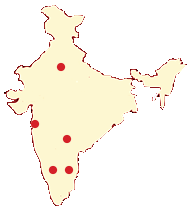Overview
Mineralization of bone: Related Topics
These medical condition or symptom topics may be relevant to medical information for Mineralization of bone
Bone Tumors
Fortunately malignant bone tumors are unusual in children and adolescents. The annual incidence of malignant bone tumors in this age group is 5.6 cases per million white children; the incidence is slightly lower in African-American children.
Osteosarcoma is the most common primary bone tumor in adolescents usually diagnosed in the second decade of life during the period of increased bone development. It is slightly more common in boys; about 1.5 boys are affected for each girl. This difference is thought to be due to the longer period of bone growth in boys. Osteosarcoma usually is found in the long bones including the upper part of the humerus, lower section of the femur and upper aspect of the tibia. The tumor spreads by metastasizing to the lungs and other bones.
Who is likely to develop Osteosarcoma?
While it is very unlikely for any individual to be at risk for osteosarcoma, teens who have a history of radiation therapy or retinoblastoma may have a modestly increased risk. There may be a genetic predisposition to osteosarcoma in familial cancer syndromes including the Li-Fraumeni syndrome.
What are the Symptoms of Osteosarcoma?
Most teens with osteosarcoma present with bone pain and swelling over the tumor. The pain may awaken the teen at night. If the tumor has spread, there may be weight loss, fever and pallor. Occasionally a teen may develop a pathologic fracture through the area of the tumor. This type of fracture occurs secondary to weakness of the bone due to disease.
How is Osteosarcoma evaluated?
A bone tumor should be suspected in any teen with persisting deep bone pain, swelling and an abnormal x-ray of the area. If osteosarcoma is suspected, the teen should be referred to a center that specializes in the care of bone tumors. A biopsy will be performed for pathological, molecular and biologic studies. An MRI of the tumor will likely be performed, as well as blood tests and imaging studies to detect lung and bone metastases.
How is Osteosarcoma Treated?

For teens with nonmetastatic osteosarcoma of an extremity, the five-year disease-free survival rate is sixty-five to seventy-five percent. The current treatment is to provide preoperative chemotherapy followed by surgery to remove the tumor. Some limbs can be saved, while other teens require amputation of the limb. Patients with lung metastases usually have a thoracotomy to remove tumors in the lungs. This is followed by chemotherapy postoperatively.
For more information, medical assessment and medical quote
as email attachment to
Email : - info@wecareindia.com
Contact Center Tel. (+91) 9029304141 (10 am. To 8 pm. IST)
(Only for international patients seeking treatment in India)










